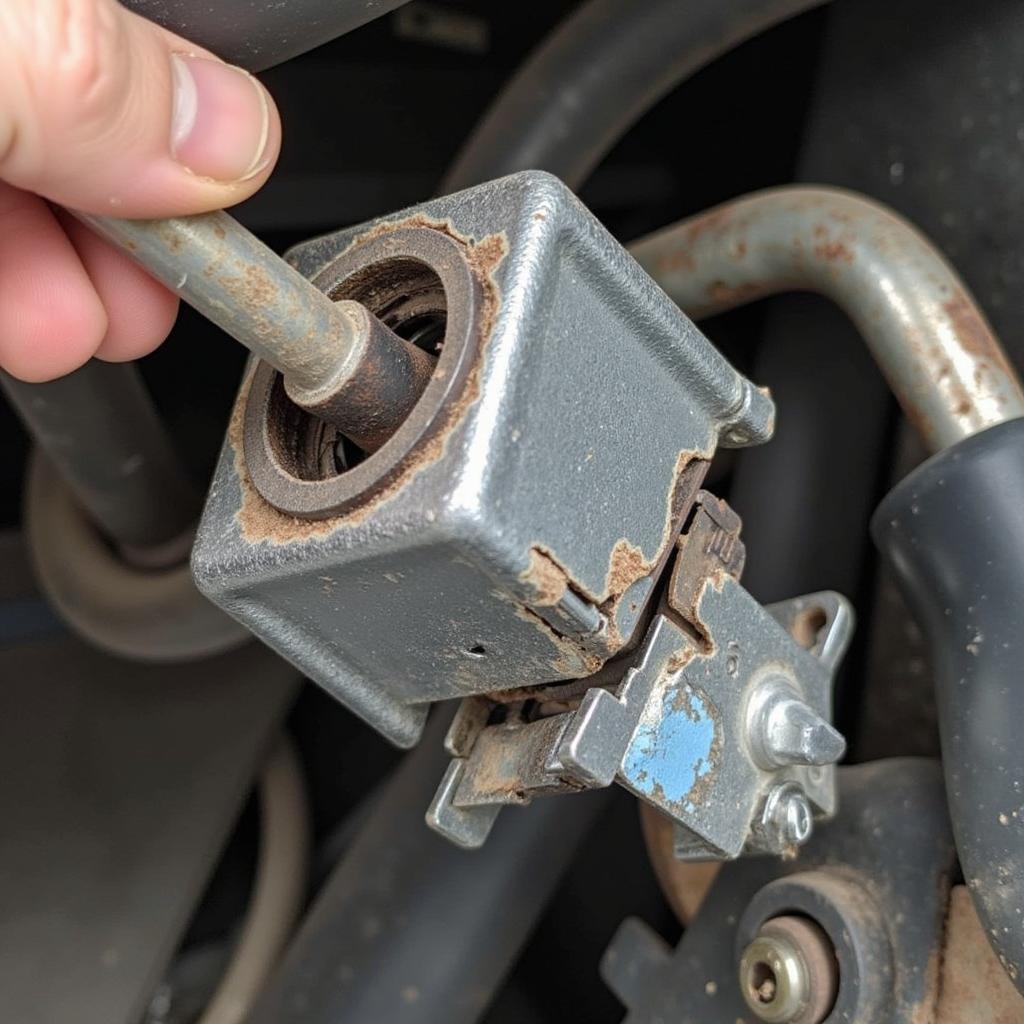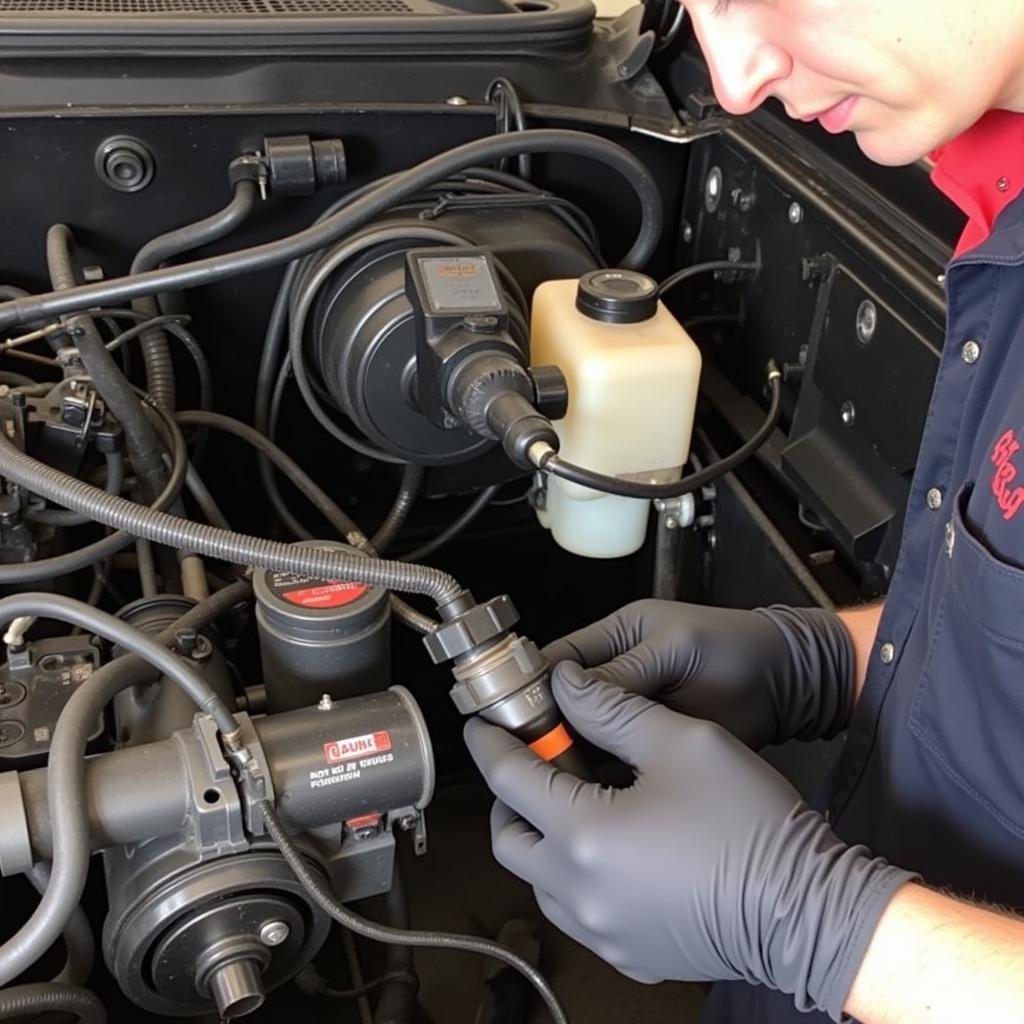If your 1994 Silverado’s brake warning light is on and your cruise control is acting up, you’re not alone. This is a common issue reported by many Silverado owners, and it can be caused by several factors. This comprehensive guide will walk you through the possible culprits, how to diagnose them, and potential solutions to get you back on the road safely.
Understanding the Brake Warning Light and Cruise Control Connection
While seemingly separate systems, your Silverado’s brake warning light and cruise control are closely intertwined. The brake warning light is designed to alert you of potential issues within the braking system, such as low brake fluid or worn brake pads. The cruise control, on the other hand, relies on a properly functioning brake system to maintain a set speed and disengage safely when necessary. When the brake system experiences problems, it can trigger the warning light and disable the cruise control as a safety precaution.
Common Culprits Behind the Issue
1. Faulty Brake Light Switch
The brake light switch, located above the brake pedal arm, plays a crucial role in activating your brake lights and signaling the cruise control system when you apply the brakes. Over time, this switch can wear out, become misaligned, or accumulate dirt and debris, hindering its functionality. A malfunctioning brake light switch can lead to several issues, including:
- Brake lights not illuminating when the pedal is pressed
- Cruise control not engaging or disengaging properly
- Constant illumination of the brake warning light
Expert Insight:
“In my experience, the brake light switch is the most common culprit behind simultaneous brake warning light and cruise control issues in 1994 Silverados. It’s a relatively inexpensive part and an easy fix, making it a good starting point for diagnosis.” – John Miller, ASE Certified Master Technician
 Faulty Brake Light Switch
Faulty Brake Light Switch
2. Low Brake Fluid Level
Your Silverado’s brake system relies on hydraulic pressure to function effectively. When the brake fluid level drops below a certain point, it can disrupt this pressure, leading to a spongy brake pedal feel, reduced braking performance, and the illumination of the brake warning light. Additionally, low brake fluid can also affect the cruise control system, preventing it from engaging or causing it to disengage unexpectedly.
 Checking Brake Fluid Level
Checking Brake Fluid Level
3. Worn Brake Pads
Brake pads are essential components that clamp down on the brake rotors to slow down or stop your vehicle. Over time, brake pads wear down naturally due to friction. When the brake pads wear thin, it can trigger the brake warning light and compromise your Silverado’s braking performance. Additionally, excessively worn brake pads can also affect the cruise control system’s ability to maintain speed and disengage smoothly.
4. Vacuum Leak
The cruise control system in your 1994 Silverado relies on vacuum pressure to operate effectively. A vacuum leak in the system can disrupt this pressure, leading to erratic cruise control behavior, such as:
- Difficulty maintaining a set speed
- Cruise control surging or dropping out
- Inability to engage the cruise control system
Expert Insight:
“While a vacuum leak is less common than a faulty brake light switch, it’s still a possibility, especially in older vehicles. Inspecting the vacuum hoses for cracks, splits, or loose connections is crucial during diagnosis.” – Maria Sanchez, Certified Automotive Technician
 Checking Vacuum Hoses
Checking Vacuum Hoses
Diagnosing the Problem
Determining the exact cause of the brake warning light and cruise control issues requires a systematic approach. Here’s a step-by-step guide:
-
Check the Brake Fluid Level: Park your Silverado on a level surface and turn off the engine. Locate the brake fluid reservoir (usually a translucent plastic container with a black cap) and check the fluid level. If it’s below the “MIN” mark, add brake fluid until it reaches the “MAX” line.
-
Inspect the Brake Light Switch: Locate the brake light switch above the brake pedal arm. With the ignition off, press and release the brake pedal while observing the brake lights. If the lights don’t illuminate, the switch might be faulty and needs replacement.
-
Inspect the Brake Pads: Check the thickness of your brake pads through the spaces between the wheel spokes. If the pads are thin or you can see the wear indicator touching the rotor, it’s time for a replacement.
-
Check for Vacuum Leaks: Carefully inspect all vacuum hoses connected to the cruise control actuator and related components for cracks, splits, loose connections, or signs of wear.
Conclusion
Experiencing a brake warning light and cruise control issues simultaneously in your 1994 Silverado can be concerning. However, by understanding the connection between these systems and following the troubleshooting steps outlined in this guide, you can effectively diagnose and potentially resolve the problem. Remember, if you’re unsure about any step or encounter difficulties, it’s always best to consult a qualified mechanic for assistance.
